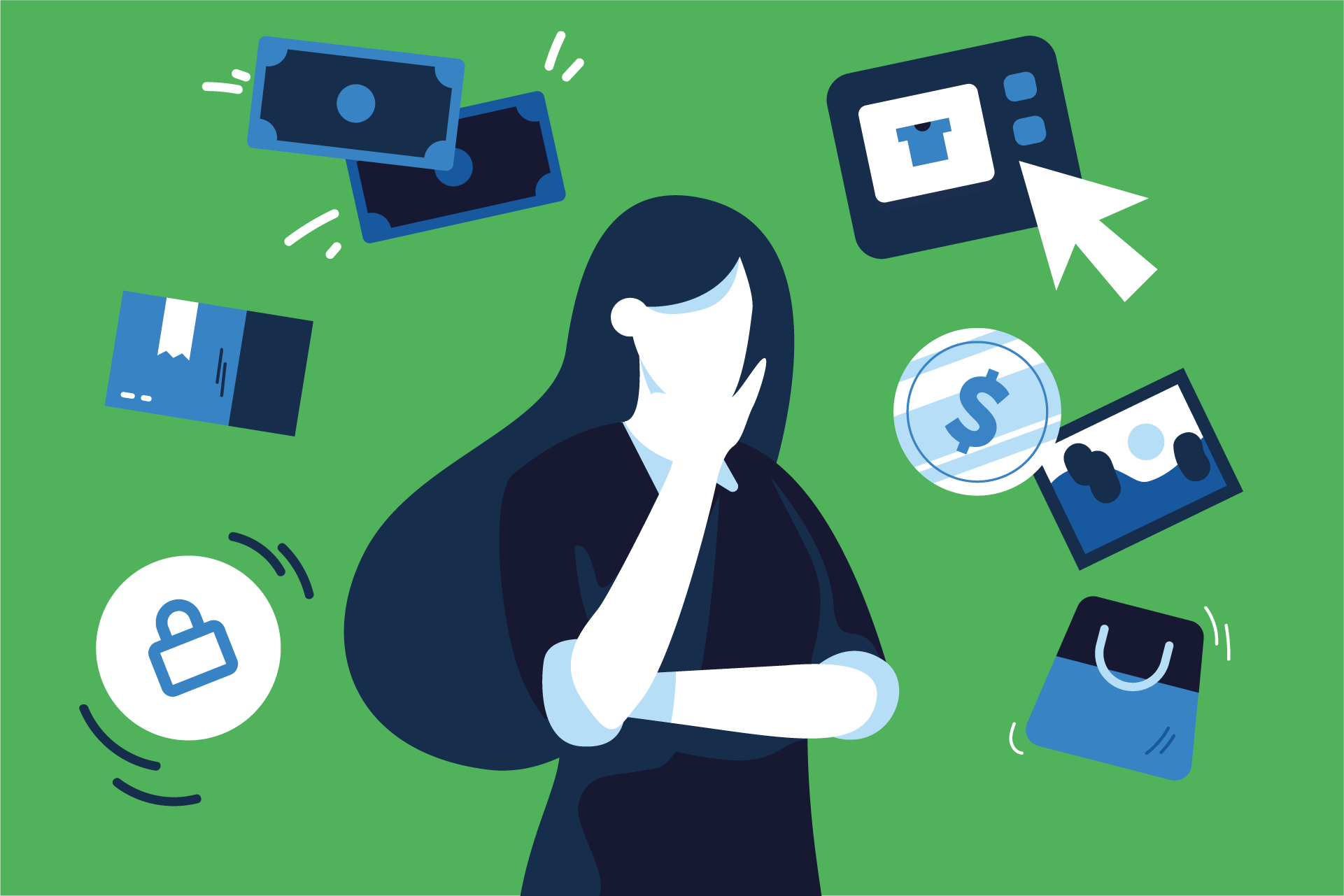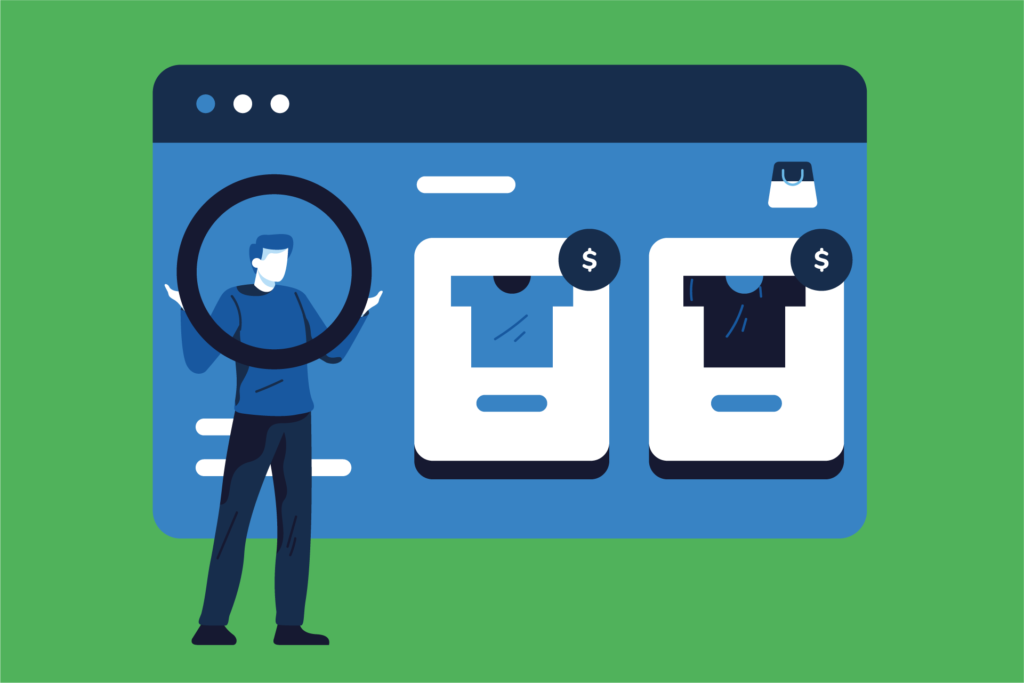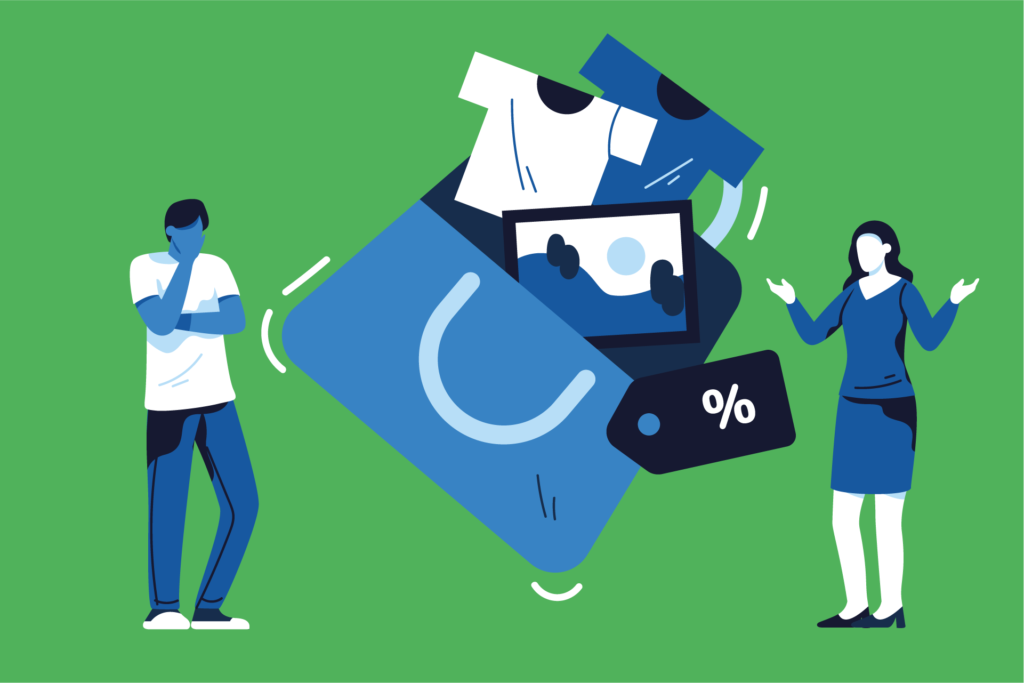Our goal at Lending Valley is to provide all small business owners access to the best loans possible for their business. You can rest assured we will get you the best rates in the market!

If Amazon is the world’s marketplace, Etsy is its craft fair.
From vintage coats to custom amigurumi penguins to handcrafted jewelry and artwork—Etsy is king when it comes to discovering unique and handmade pieces.
And everything listed on Etsy comes from the person who created (or sourced) it. Etsy isn’t about manufacturing and fast fashion—it’s about someone out there sharing their creations with the world.
Do you want to be one of those someones? Are your banana-inspired onesies ready to take the Etsy market by storm?
Then today we’re going to show you how. We’ll answer the questions that can get you stuck, so you’re free to focus on the fun (and also daunting and exhilarating) part—selling your wares.
We walk you through what Etsy is and how it works. We break down the general fees guide. We show you how to open an Etsy shop in 8 easy steps. Then we’ll share our pro tips on how to take your Etsy shop from Open to Awesome!
We like to call this guide:
Maybe you already know the basics. That’s cool. Feel free to skip to the part you need (but don’t skip the fees part…seriously).
Etsy is an online marketplace that sells handcrafted, unique, or vintage products. Its sellers are small businesses and individuals, and its buyers are people who want something special. Something unique. It’s a bit like eBay or Amazon, except not.
Unlike Amazon, Etsy doesn’t have all its products in a massive store. It links people who make handmade things with people who want them.
Unlike eBay, Etsy doesn’t list a bunch of mass produced items or second-hand goods (vintage pieces being the exception).
Sellers on Etsy are much more accessible, too. We have profiles, and we build a community with the people who buy from us.
The actual buying process is the same: find what you want, click a few buttons, enter your address, done!
For buyers: just like any other site, you can buy as a guest, or sign up. Creating an account lets you keep track of your shopping basket, add your favorite sellers, write reviews, and send messages.
For sellers: hit the Sell on Etsy button, and select Open an Etsy Shop. You can customize your language, country, and currency straight away. And then the fun part—you give your Etsy shop a name!
If you’ve got something delightful that falls under one of these category umbrellas, you can sell it:
Handmade Goods. Art of all different kinds, clothing, toys, knick-knacks, crafts, jewelry, accessories… as long as the brand is you, you’re in the right place.
Vintage Items. The only way to resell manufactured items is if they are over 20 years old. This is where Etsy draws the line for calling something ‘vintage’. Etsy have cracked down on ‘vintage’ listings lately, to filter through any of those sneaky and unscrupulous sellers trying to pass off inauthentic items. If you’re selling vintage pieces on Etsy, be prepared for them to ask some questions:
If the quality control team at Etsy asks for proof of your item’s legitimacy as a vintage piece, there are also some answers they don’t accept. They even tell you what those answers are:
Craft Supplies. Maybe you make supplies that people can use to make their own unique pieces. Maybe you’ve created templates for party supplies or invitations. Or knitting patterns for a cute woolen owl. You can sell these on Etsy, too.
Yes, Etsy has fees.
We can’t be mad at them—but we do need to understand them.
To get the basics out of the way, it’s free to join Etsy as a seller, but when you start doing actually business (you sell something—yay!) you will get hit with merchant fees. These will either be deducted automatically from your Etsy account funds, or they’ll be charged to your credit card. We’ve broken down the most common charges below (in USD).
So, let’s start at the top:
This is the fee Etsy charges you when you list an item in your shop. You pay this fee for each product you list, and it allows your item to stay displayed in your shop for up to 4 months. After 4 months you can pay the listing fee to renew.
This is charged when your item sells, and currently sits at 5% of the total item cost (including gift wrapping, shipping, and optional extras).
If your customers use Etsy Payment, you incur a payment processing fee of 3% + $0.025 per transaction (*for U.S. sellers). For sellers in other countries, Etsy provides a breakdown of their international fees here.
There are two things to note when it comes to Etsy’s payment processing fee:
Apart from the standard fees we all pay, you might come across some others depending on how you operate.
Advertising your shop on Etsy has a per click rate. If you choose to run adds, you can set up a daily budget for your campaign based on what you want to achieve.
Some sellers use an Etsy Plus plan, which gives you additional tools to grow your shop. This will cost you $10.00 per month.
If you choose to sell independently of Etsy, via Square, Square charges $0.20 per transaction + credit card processing fees.
Finally, if your shop’s listing currency is different from your settings currency—the currency set in Payments on your account—Etsy charges a 2.5% currency conversion fee.

Now that we’ve got the fees under control, I think we’re ready for the fun part. Setting up your own Etsy shop, in 8 simple steps:
Step 1. Open your Etsy shop.
Click the Sell on Etsy button on the Etsy website, and then click Open your Etsy shop.
Step 2. Set your language, home country, and preferred currency.
See the Save and continue button? Hit that.
Step 3. Give your shop a name.
For a lot of us, this is our first foray into selling the items we make, so have some fun with this part. Within reason. Etsy allows you to use between 4 and 20 characters, no spaces, no special characters, no trademarks, and no cuss words.
BananasArePajamas is available, if anyone really is running with the banana onesie idea.
Think about the future of your shop, too. Etsy has some advice about choosing a shop name if you need guidance. Then hit Save and continue again.
Step 4. Add your first item.
We’ll talk a bit later about creating a good listing—something people want to click on. For now, here are the basics.
Step 5.
Got more items? Repeat step 4 until your shop is filled with your beautiful wares.
Step 6. Set your payment methods.
How do you want to be paid? Etsy Payments is the most popular with buyers, because it allows them to pay by PayPal, credit and debit card. PayPal is no longer a standalone option on Etsy unless you are not eligible to use Etsy Payments. One final word on payment methods: if your country is eligible to use Etsy Payments, you are required to offer it as a payment method. So say the laws of Etsy.
Step 7. Set up your billing info.
The process might vary from country to country, but generally speaking: Etsy asks for your credit card details, store them on file, and ask your permission to charge the fees we talked about earlier.
Step 8. Open your Etsy shop!
So there you go—your Etsy shop is now live.
You could get selling right now if you wanted.
But here’s the thing: you’ve spent a lot of time honing the skills that go into making your items. You’ve spent time to create your own Etsy shop. Why take a shortcut now? Next up, we’ll go over all the ways you can customize your shop, and make it the absolute best it can be. It’s time to get your banana onesies noticed.
The biggest consideration for shop owners is usually: how do I give value to my customers? On Etsy, value comes from giving them good quality items, and being transparent. You don’t need professional marketing tricks and buzz words here. You need to be you.
Profiles with photos allow buyers to connect with you, and see that you’re a real person. Etsy users, as a community, are looking for the story of your product. How did you start making banana onesies? Why do you make them this way? Why do you love them so much?
How long does it take you to make a banana onesie? That is going to dictate your turnaround and delivery times.
How often do you ship? What payment methods do you accept? What are your terms for exchanges? How can the rest of us get in touch with you? How can I follow you on social media?
You can group items into categories, to make navigation easier for your buyers. That way on your homepage, your buyers will see all banana onesies together, along with how many items you’re listing. If they’re more interested in your strawberry onesie, they can navigate there directly and see that OMG there’s only one left in adult size!
Etsy lets you use its social media function to share your shop updates, new listings, reviews—even specific items—to your social channels.
And preferably 2,000px wide. The thing is, we all love a bright, glossy picture, and they sell our products well. Etsy offers up to 10 images per listing, so take advantage of every one you get by using well-lit, clear, detailed photos of what you’re selling. Take the guess work out of what your buyer is seeing, and you’ll give them more peace of mind.
Also, perception is key. In foodie terms, ‘we eat with our eyes first.’ If your images look bright and polished, your shop looks bright and polished. If your images look dark and poorly lit, well—it looks cheap. Take the time to take lovely photos of your beautiful products. You don’t need a professional camera, just good lighting and a keen eye—almost every smartphone is capable of taking a good photo.
We know—oh boy, do we know—that there’s a fine line between being competitively priced, and turning a profit. Buyers flock to Etsy to find unique pieces that won’t leave their wallet broken and bruised. They also want quality. You have both of these things to offer, if you just take the time to work out your prices properly.
One thing that can really help when you have an Etsy shop is their handy resources on exactly that topic. We love their formula for pricing your products, and also their interactive worksheet for strategic pricing.
In general, we all have to remember to factor in the cost of making our products. How much did it cost you to make your adult sized banana onesie? You need to know that. How much will it cost you to sell it? Luckily we already learned that part at the beginning of the guide. Start with these things and work out where you need to be setting your prices.
How you go about this is entirely a personal choice, but best practice in any venture is to separate your personal finances from your business finances. Unless accounting is second nature for you, it might be worth looking into business accounting software. This can help you track your income, expenses, and plan for the future growth of your new shop.
Something else to consider is running a business credit card (or cash back business credit card) specifically for your Etsy shop. If you need help choosing the right one—think about your own spending habits, rewards goals, and personal credit score.
Sometimes SEO can look a little more daunting than it really is. Here, we’re going to look at the things you can learn right now to establish your online presence. An online presence means you appear in searches. People can click your link. They visit your shop. You sell millions of banana onesies*!
*Individual results may vary drastically.
To make the most of SEO for our Etsy shop, we choose a product title that is clear and describes what we’re selling. Then we use tags in our listings.
Think about what people might type in the Etsy search bar when they’re looking for what you’re selling. It probably won’t be your shop name—not in the beginning, anyway. They’re probably typing words that relate to what they want.
Maybe they type onesie pajamas adult.
The first thing that matters is our title. Are the words onesie, pajamas, and adult in our product title? We hope so.
Earlier we talked about a title like: Yellow Banana Onesie Pajamas—Adult Sizes—by BananasArePajamas. It’s not fancy. But it’s accurate, it’s organic, it’s not misleading, and it’s clear what we’re selling.
Then maybe we tag our listing with pajamas, PJ, for him, for her, adult sleepwear, onesies, novelty, gift, and funny.
When you use relevant tags in your listing, Etsy is able to combine them when people search for your kind of product. You can also use EtsyRank to help find the best keywords for your (real) products.
Over time, you’ll also build a listing score (sometimes it’s called relevance). Let’s say that someone types in the search bar and your listing comes up. They click it. They favorite it, or interact in some way, or spend time reading through your listing. This shows the search algorithm that it gave the customer what they wanted. It did a good job. And it’ll do the same thing next time a customer searches those words, because it wants to do a good job again.
Thirdly, Etsy wants quality experiences for its sellers. Good ratings and reviews, a detailed bio, and strong activity all boost your shop higher up the search results.
This next part takes time to build up, and to be fair, it might not be suitable for the type of items your shop sells.
The more you saturate the marketplace with your offerings, the easier you’ll be to find in searches. If 50% of the keywords for ‘onesie pajamas for adults funny’ link back to your products, you’ll dominate that search. The quickest way to have that happen is to have multiple listings. Some Etsy expert sellers recommend having at least 50 listings.

If you worked through this article with us step by step—congratulations! You’re now the proud owner of your very own global Etsy shop. Enjoy. And work hard.
Etsy is an amazing platform, but it isn’t a get rich quick scheme. Take time to curate a beautiful shop, and maintain it. Start conversations with your buyers, and look after them. Tell your shop’s story, and do it proudly. Not only do these things lend to your buyers’ experiences, they also increase the chance of repeat business, improve your ratings, and help you rank higher in search results.
If there are parts of running an Etsy shop that you don’t understand, they’ve got an awesome seller handbook you can refer to.
Most of all, have fun! You create things you love to create, and there are people out there who want what you have to offer. Etsy is a great platform to grow your talents into a business you can be proud of.